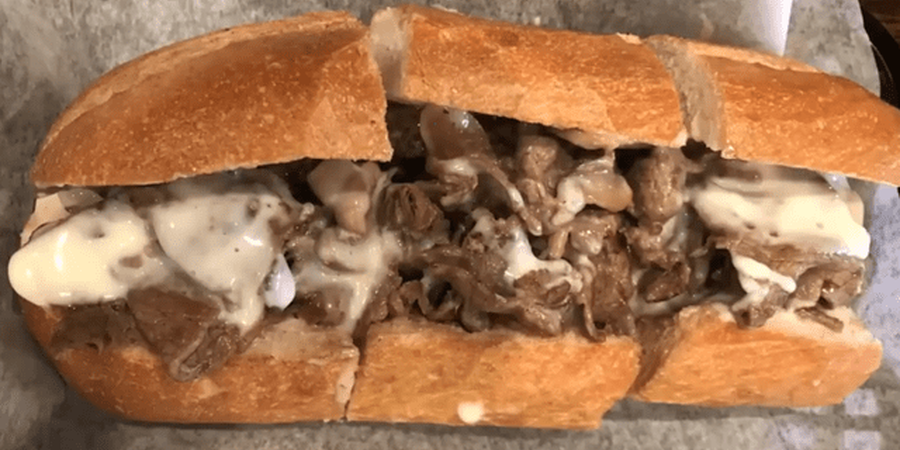Philadelphia, PA - The Philadelphia Cheesesteak can be summed up by its delicious components - a fresh roll, thinly sliced beef, grilled onions or mushrooms, and of course, cheese. And no Philadelphia Cheesesteak is complete without Provolone, American, or the classic staple, Cheese Whiz. However that this was not always the case?
The History of the Cheesesteak: From Philly Streets to Global Fame
The cheesesteak is more than just a sandwich; it’s a cultural icon deeply rooted in the history and identity of Philadelphia, Pennsylvania. From its humble beginnings in the 1930s to its status as a global symbol of the city, the cheesesteak’s journey reflects the grit, creativity, and pride of the people who call Pennsylvania home. This article explores the origins, rise to fame, and enduring significance of the cheesesteak, tracing how a simple meal became a beloved tradition.
The Origins: A Hot Dog Stand Innovation
The story of the cheesesteak begins in South Philadelphia during the early 1930s, at a modest hot dog stand run by brothers Pat and Harry Olivieri. As the legend goes, one day in 1933, Pat grew tired of the usual hot dog fare and decided to try something new. He grilled some thinly sliced ribeye steak, tossed it onto an Italian roll, and added onions. A passing cab driver caught a whiff of the savory creation and asked to try it. He loved it so much that he urged the brothers to ditch the hot dogs and focus on this new sandwich instead. And so, the cheesesteak was born.
Initially, the sandwich didn’t include cheese—that addition came later. In the 1940s, a manager at Pat’s King of Steaks—the restaurant that evolved from the original stand—named Joe Lorenza added provolone to the mix, creating the first official cheesesteak. The combination of tender steak, melted cheese, and a crusty roll was an instant hit, cementing the sandwich’s place in Philadelphia’s food scene.
Rise to Fame: From Local Favorite to National Icon
The cheesesteak’s popularity grew steadily through word of mouth, but it wasn’t until the mid-20th century that it began to gain wider recognition. Pat’s King of Steaks, still located at the corner of 9th Street and Passyunk Avenue, became a go-to spot for locals and visitors alike. In 1966, a rival emerged just across the street: Geno’s Steaks, founded by Joey Vento. The flashy neon lights and bold signage of Geno’s sparked a friendly (and sometimes not-so-friendly) competition that drew even more attention to the cheesesteak.
As Philadelphia’s reputation as a food city grew, so did the cheesesteak’s fame. By the 1970s and 1980s, the sandwich had become a must-try for tourists, and media coverage—ranging from food critic reviews to appearances in movies and TV shows—helped solidify its status as a national icon. The cheesesteak’s appeal lay in its simplicity: a hearty, flavorful meal that was affordable and accessible to all.
Cultural Significance: A Symbol of Philadelphia
For Philadelphians, the cheesesteak is more than just a sandwich—it’s a point of pride and a reflection of the city’s working-class roots. The cheesesteak embodies the no-nonsense, unpretentious spirit of Philadelphia, where hard work and authenticity are valued above all. Whether you’re a laborer grabbing a quick lunch or a family celebrating after a Phillies game, the cheesesteak is a great equalizer, bringing people together over a shared love of good food.
The sandwich has also become a cultural touchstone, sparking debates that are as passionate as any sports rivalry. Ask a local where to find the best cheesesteak, and you’ll likely hear strong opinions about Pat’s vs. Geno’s, or whether Cheez Whiz, American, or provolone is the superior cheese. These debates are part of the fun, reinforcing the cheesesteak’s role as a communal experience.
Beyond Philadelphia, the cheesesteak has become a symbol of Pennsylvania itself. It represents the state’s blend of tradition and innovation, as well as its ability to turn something simple into something extraordinary. For many, biting into a cheesesteak is like tasting a piece of history—a reminder of the state’s rich cultural heritage.
The Enduring Appeal: Why the Cheesesteak Still Matters
So, why has the cheesesteak remained so popular for nearly a century? Part of its enduring appeal lies in its simplicity. With just a few key ingredients—steak, cheese, onions, and a roll—it’s a sandwich that anyone can enjoy, yet it’s versatile enough to allow for personal preferences. Whether you like it “wit” or “witout” onions, or you’re Team Whiz or Team Provolone, the cheesesteak can be customized to suit any taste.
Moreover, the cheesesteak has a timeless quality. In an era of ever-changing food trends, it remains a comforting constant—a reminder of a time when meals were straightforward and satisfying. Its connection to Philadelphia’s history and identity also gives it a sense of permanence; as long as the city stands, so will the cheesesteak.
The cheesesteak’s journey from a hot dog stand experiment to a global icon is a testament to the power of simplicity, community, and tradition. It’s a sandwich that tells the story of Philadelphia—a city built on hard work, resilience, and a love for the unpretentious. Whether you’re standing in line at Pat’s, debating cheese choices with a friend, or simply enjoying the sizzle of steak on a griddle, the cheesesteak offers more than just a meal. It offers a taste of Pennsylvania’s heart and soul, wrapped in a crusty roll.


